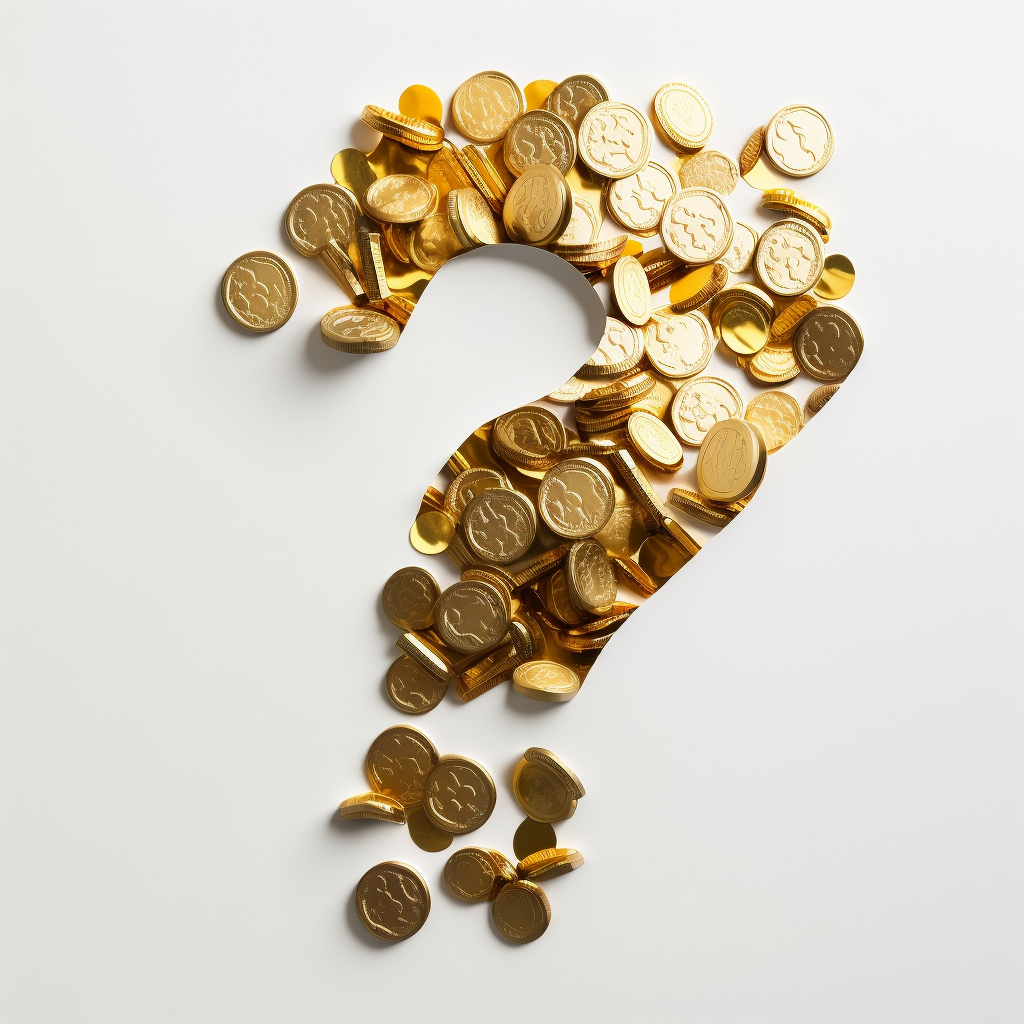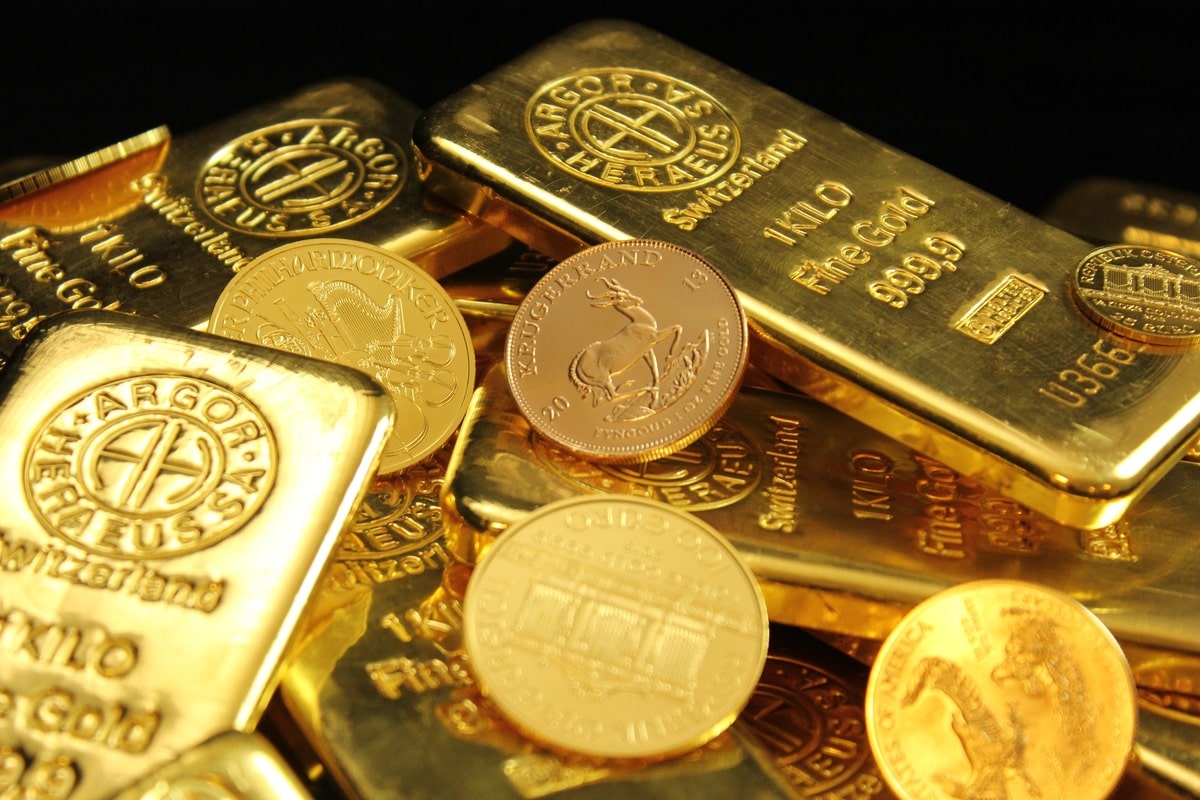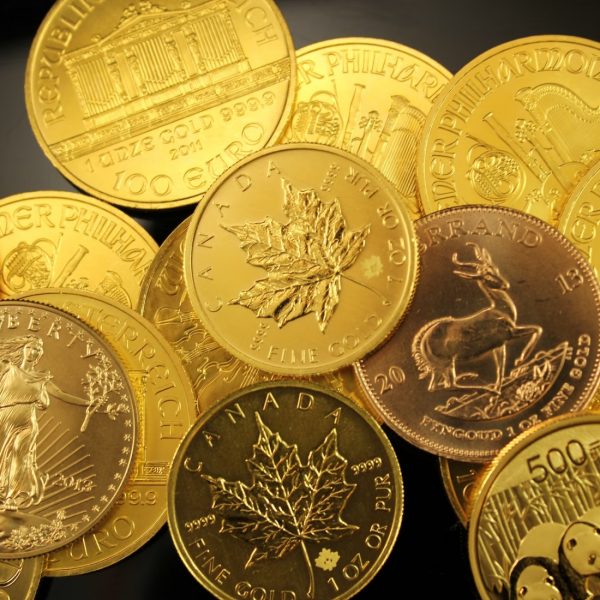What Risks are Involved in Gold Investment?
17/09/2023Daniel Fisher
Free & fully insured UK Delivery. Learn more
Secure & flexible payments. Learn more

Buyback Guarantee Learn more
Gold is one of the world’s oldest investment assets that investors have always depended upon. It is seen as a generally safe, valuable asset that acts as insurance for your investment portfolio. The yellow metal provides safety and security for investors and generates steady returns over the short term.
Due to these attributes, investors have repeatedly turned to gold during times of economic uncertainty. Many investors consider gold as a way of removing risk from their lives. The price of gold also beats inflation and protects the value of an investor’s portfolio from depleting.
However, while gold is considered a lower-risk investment overall, it is not completely without risks. As with any investment, investors need to understand the potential downsides involved before allocating funds. This enables informed decision-making when constructing a balanced portfolio.

While deemed as low risk, gold investment isn’t completely risk-free. If buying paper gold, there are further risks, such as possible leveraging of the asset and counterparty risk. Here we discuss possible risks associated with gold investing.
The first risk is that the gold price could move lower in the time you hold the gold, known as market risk. This becomes less likely over the medium term as any market volatility is ironed out. It may sound obvious that the gold price can move down as well as up, but it’s important to highlight when considering your appetite for various risk types.
Some investment assets provide ‘capital protection’, meaning you can’t lose the money you put into the asset. A common example would be a Cash ISA or bank savings account. In theory, while interest on these accounts is small, at least there’s no risk of losing your initial deposit. However, with banks becoming less stable over the past decade, many savers feel their capital is no longer fully protected when leaving cash in a bank savings account.
While selling your gold at a lower level than your purchase price will lead to some capital loss, focussing on physical gold assets like coins or bars will mean the value can never fall to zero.
Many other capital-at-risk assets pose this very stark risk. Very popular paper assets including shares in companies can become completely worthless if the company goes into administration. Physical gold coins and bars hold an intrinsic value due to gold’s scarcity, limiting the risk of capital loss.

When you invest in physical gold bars and coins, you are free from counterparty risk. This risk is generally associated with investments dependent on a third party’s fulfilment of a transaction. If there is a crisis in the market or the company that has issued you the paper gold performs poorly, the value of your investments could erode.
In such cases, the value may drop to zero in a worst-case scenario. However, the market price of gold has never fallen drastically over the last 20 years. Physical gold is an asset class free from counterparty risks and is intrinsically valued.
The price of gold can rise or fall due to market demand and can therefore be volatile and less predictable in the short term than other assets. This diminished predictability may be deemed a short term risk if you’re planning on buying or selling gold soon.
Gold is traded in the international markets at a daily price known as the spot price. The spot price of gold is calculated in US dollars per Troy ounce. There may be price fluctuations over the short term. However, gold has always posted healthy returns over the medium to long term. The price of gold rises in value faster than the inflation rate over the medium to long-term horizon. Therefore, investors view gold as a dependable store of wealth. If we look at price charts of gold over the last 10 years, we can see that the price of gold has never gone below $1,000 per ounce during this time.
One notable risk associated with physical gold bullion is the cost of storage and insurance. If opting to hold physical metals in the form of gold coins or bullion bars, investors must pay storage and insurance fees to protect their investment. This is an extra cost compared to holding gold via other methods, like gold ETFs (Exchange-Traded Funds) and gold funds.
While larger investors may find it viable to store gold privately, smaller retail investors generally opt for professional vault storage. Clearly, choosing to keep your gold yourself, poses the very real risk of loss or theft. Reputable precious metal dealers often provide secure vault options. But there is still a storage fee to factor in, typically calculated as an annual percentage of the gold’s value.
There are also costs involved in insuring physical gold investment against risks like theft and damage. So, investors need to weigh up these expenses against any perceived benefits of direct physical gold ownership when constructing their diversified portfolio.
Where there’s wealth opportunity, there will also be crime and fraudsters. Gold’s reputation as a high value asset unfortunately also attracts its fair share of criminal attention. Stories of fake gold bars filled with tungsten to appear genuine provide a warning to invest carefully.
Buying gold coins and bars from a reputable dealer with the correct accreditations and track record, will eradicate these risks. Trying to cut corners by purchasing gold from private individuals leaves the investor vulnerable to owning counterfeit gold.
Authentic gold bars from trustworthy sources will be certified and stamped with weight, purity and manufacturer. Some of the latest gold coins are now minted with intricate anti-counterfeit technology to ensure their integrity and make it impossible to replicate. A great example of such coins are the Royal Mint’s Gold Britannia coin which is now made with such details that they’re deemed impossible to copy.
Where there’s wealth opportunity, there will also be crime and fraudsters. Gold’s reputation as a high value asset unfortunately also attracts its fair share of criminal attention. Stories of fake gold bars filled with tungsten to appear genuine provide a warning to invest carefully.
Buying gold coins and bars from a reputable dealer with the correct accreditations and track record, will eradicate these risks. Trying to cut corners by purchasing gold from private individuals leaves the investor vulnerable to owning counterfeit gold.
Authentic gold bars from trustworthy sources will be certified and stamped with weight, purity and manufacturer. Some of the latest gold coins are now minted with intricate anti-counterfeit technology to ensure their integrity and make it impossible to replicate. A great example of such coins are the Royal Mint’s Gold Britannia coin which is now made with such details that they’re deemed impossible to copy.
The price of gold, like any traded asset, is influenced by broad economic factors. Variables like interest rates, currency fluctuations, inflation, and global demand can all impact the gold market. For example, when interest rates rise, the opportunity cost of holding gold increases.
Since gold provides no passive income like bonds, some investors may liquidate gold positions to seek higher yielding assets when rates rise. Conversely, gold often rallies when interest rates fall or during inflationary periods. But the point remains that gold is not immune to economic forces.
Investors should recognise gold’s sensitivity to macro conditions when looking to mitigate portfolio risk.
A key attribute of gold is its role as a hedge against inflation. Gold has historically retained its purchasing power over time. However, some periods see gold underperform or lose pace with inflation.
This occurred most notably during the 1980s and 1990s when gold prices were depressed. So, while gold is largely viewed as an inflation hedge, its performance is not guaranteed. There is always the possibility that rising inflation outpaces any upside in nominal gold prices.
This poses a potential inflation risk to investors relying on gold as a store of value. Although inflation protection remains a key motivator for gold ownership today, investors should stay mindful of this risk.
The gold market can also be impacted by political risk factors. Major events like elections, wars, geopolitical tensions, trade policy changes, and new legislation/regulation can all influence gold prices.
For example, heightened geopolitical uncertainty often spurs safe-haven demand for the yellow metal. However, unexpected policy shifts regarding aspects like gold ownership restrictions or tax changes could adversely impact gold investing in certain countries.
The period leading up to a general election can often witness the current governing administration make significant economic changes to win over public support. For example, taxes may be cut to gain popularity even if unsuitable for an economy, impacting the gold price.
While gold has a worldwide market, political risks do remain. Investors should factor in this unpredictability when making allocation decisions to this asset class.
One downside of gold investments is that they do not generate any passive income like bonds or stock dividends. Gold is not an income-producing asset – it relies solely on price appreciation for returns.
While gold can experience strong capital growth over time, it does not provide regular interest payments or dividend payouts like other assets. This means gold does not contribute any current income to an investment portfolio.
For investors focused on cash flow, this could be considered a disadvantage. However, many investors are willing to forgo dividends/interest in exchange for gold’s historical stability and role as a portfolio diversifier.
However, the lack of passive income remains a risk factor, especially in times of rising interest rates when the opportunity cost of holding gold goes up.
Use our automated portfolio builder to get suggestions based on various investment objectives.
Gold’s price on the world’s stage has climbed steadily over the years, though not without some tumbles along the way. I remember first noticing gold creeping toward $400 an ounce back in the mid-1990s.
It seemed an unfathomable sum at the time! But the rise had only just begun. Gold powered upwards through the 2000s. By 2011, it peaked above $1,900, a staggering increase. Today, it holds strong above $1,700 after some ups and downs.
Tracking gold’s price history reveals much to a careful observer. Economic ripples stir its surface. Inflation, interest rates, fear and uncertainty – all sway its path.
Gold follows no straight line. But its central drift points upward. For an investor with a long-term view, gold’s glide path seems sure to continue. Though timing its dips and crests proves foolish, the allure endures.
While not completely risk-free, Gold’s track record offers hope.
As with any investment, the prudent approach weighs the pluses and minuses. Storage costs gnaw at returns. Inflation may race ahead. Politics introduces uncertainty. No dividends flow from inert metal.
Yet gold perseveres. Its worldwide appeal has burnished over time. Despite ups and downs, people trust in gold. It diversifies, hedges and preserves. Amid the chaos, gold provides order.
For me, moderation is key. Other assets offer income upside. But a portion in gold lends ballast. Its haven shines when markets plunge. Over long horizons, gains accrue.
Gold need not be feared or worshipped. With clear eyes, it can steer one’s ship through stormy seas. I sleep better knowing gold’s timeless power protects a part of my family’s future. The risk to your wealth of not owning any gold is far greater than the risks of owning it.
Physical Gold is one of the nation’s most trusted gold dealers. We are always proud to serve our customers, and our advisors would be happy to discuss your investment plans and provide investment advice. Call us on (020) 7060 9992 or reach out to us online via our website.
No, gold is generally considered a lower-risk investment, especially for the medium to long term. It has a history of maintaining its value and acting as a hedge against inflation and market volatility. The main risks come from short-term price fluctuations. But gold has demonstrated long-term stability.
Gold is seen as much less risky than stocks over the long run. Stocks have higher volatility and a higher potential for losses. Gold’s price has been far less volatile historically. It does not expose investors to risks like gold companies’ bankruptcy. Gold provides an alternative to diversify away from stock market risk.
In the UK, physical gold purchases do NOT need to be reported to HMRC or added to any register. ID is required for any one purchase exceeding £10,000 or for cumulative purchases totalling £10,000 over a 12-month period This is for anti-money laundering purposes when buying gold rather than for reporting.
Gold is generally considered one of the safest investments and has been classed as a tier 1 asset. It reduces portfolio volatility as it is less correlated to other asset classes. It can experience price fluctuations but has outperformed inflation over the medium and long term.


Live Gold Spot Price in Sterling. Gold is one of the densest of all metals. It is a good conductor of heat and electricity. It is also soft and the most malleable and ductile of the elements; an ounce (31.1 grams; gold is weighed in troy ounces) can be beaten out to 187 square feet (about 17 square metres) in extremely thin sheets called gold leaf.
Live Silver Spot Price in Sterling. Silver (Ag), chemical element, a white lustrous metal valued for its decorative beauty and electrical conductivity. Silver is located in Group 11 (Ib) and Period 5 of the periodic table, between copper (Period 4) and gold (Period 6), and its physical and chemical properties are intermediate between those two metals.